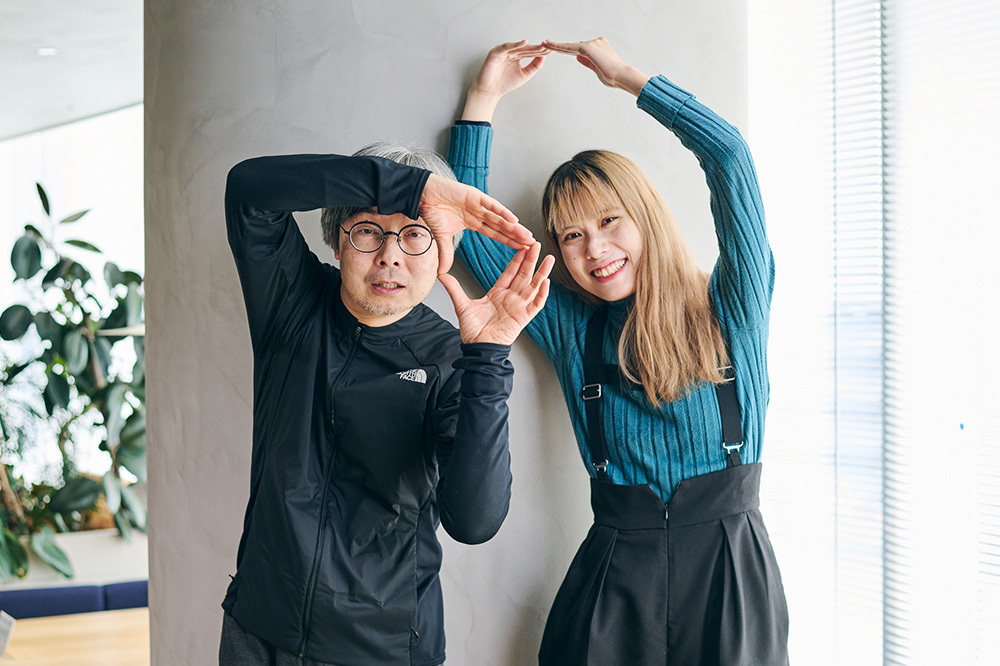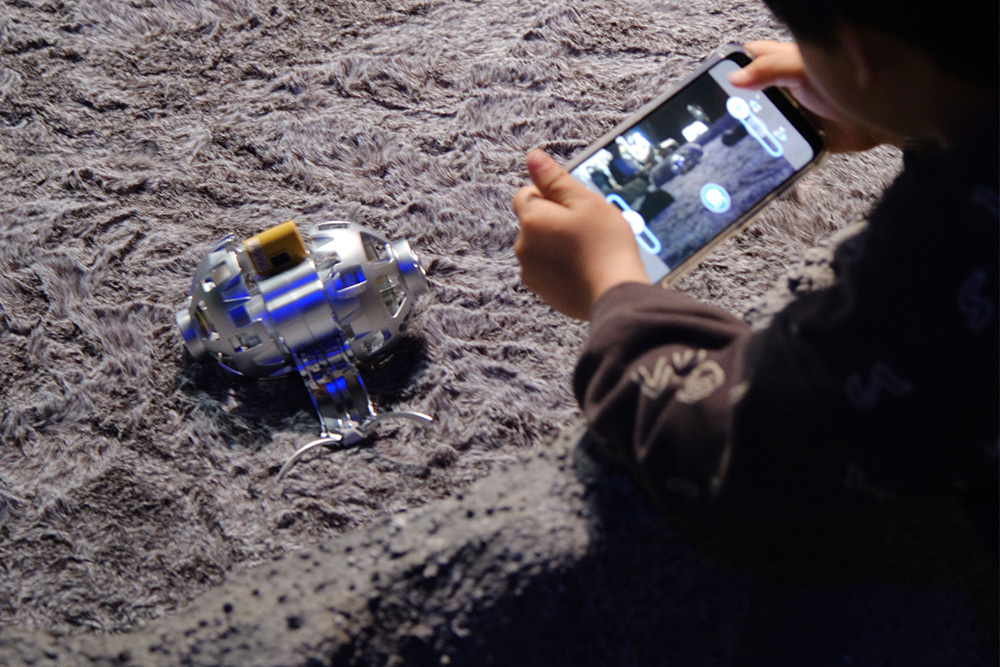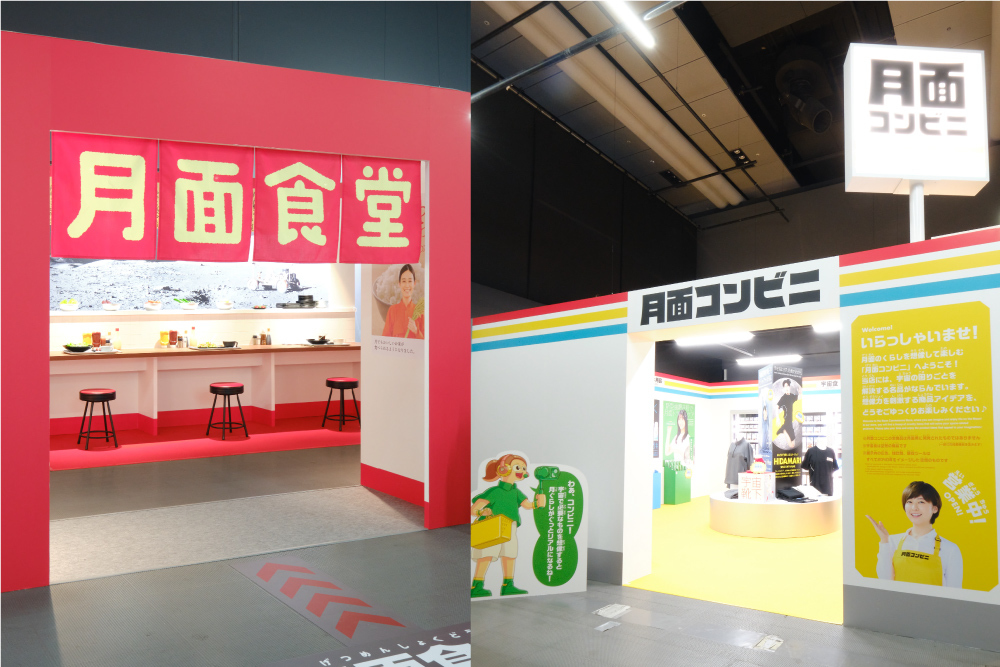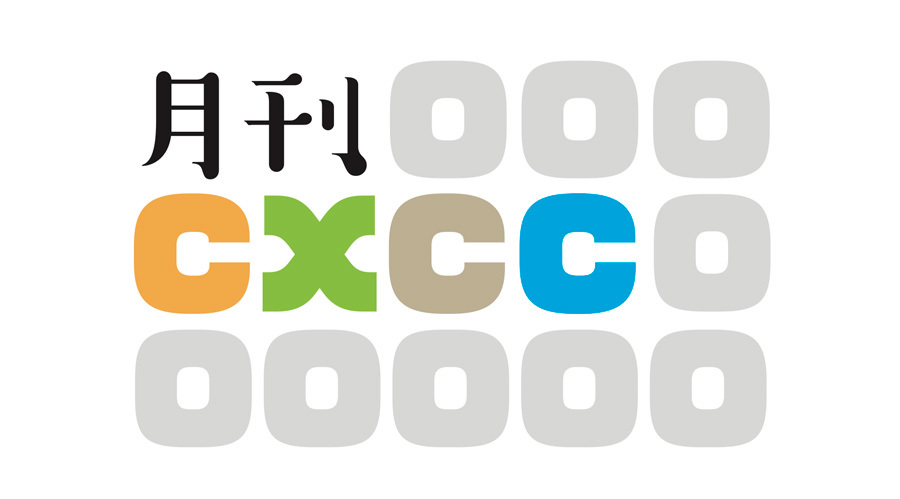How can Dentsu Inc.'s creative team contribute to the ever-evolving field of CX (Customer Experience)? "Monthly CX" is a series where members of Dentsu Inc.'s CX specialist unit, the "CXCC" (Customer Experience Creative Center), share insights ( For more on Monthly CX, click here ).
This installment introduces the case study of the "NEO: Living on the Moon Exhibition ~ Space Development Leads to a New Era of Lunar Migration!" project, held at the National Museum of Emerging Science and Innovation (Miraikan) from April 28 to September 3, 2023.
We spoke with Hiroshige Takakusagi, who oversaw planning and coordination, and Kurumi Aiba, responsible for promotion and PR, about the project's journey and the design considerations for the exhibition.

[Profile: Hirosumi Takakusagi]
Dentsu Inc.
Customer Experience Creative Center
Creative Director / Art Director
From 36×36 pixel icons to Boeing 747 paint designs, he values creating widely and joyfully, regardless of scale. In recent years, he has frequently worked on "experience design" from a perspective that encompasses the entire communication landscape. He has received numerous awards both domestically and internationally, including the Cannes Lions International Festival of Creativity, NY One Show, CLIO Awards, NYADC, Dentsu Inc. Advertising Award, Newspaper Advertising Award (Japan Newspaper Publishers & Editors Association Advertising Committee), and Good Design Award, while also serving as a judge.
【Profile of Kurumi Aiba】
Dentsu Inc.
Customer Experience Creative Center
Digital Planner
After working in PR and digital departments, she now serves as a planner for digital initiatives including SNS, web videos, and online events. Leveraging her hobby of VR, she also plans metaverse experiences and events.
*Affiliation and position are as of the time of the interview.
Launching projects from scratch and overseeing operations
Monthly CX: Could you tell us about the "NEO Living on the Moon Exhibition" and your respective roles in this exhibition?

[Experience life on the moon] Official PV for the special exhibition "NEO Living on the Moon Exhibition"
*Click the image to watch the video
Takakusaki: The "NEO Living on the Moon Exhibition" depicts a world where humanity's dream of "lunar settlement" has become reality, based on scientific knowledge. It's an exhibition where you can become a member of a lunar base community, experience that "daily life," and learn about space in an enjoyable way. We held it targeting primarily families with preschoolers and elementary school children.
The venue consists of the "Lunar Zone," where visitors can feel close to lunar exploration, and the "Lunar Base Zone." The "Lunar Base Zone" is divided into three areas: the "Living Area" where visitors experience life on the moon, the "Control Room Area" tasked with ensuring safety during lunar living, and the "Lab Area" where visitors learn about geology and water resources through hands-on experiences. The exhibition design was crafted to spark excitement and curiosity about what life would be like if we actually landed on the moon.
My role was overall supervision. While I usually handle communication tasks like promoting exhibitions, this time it started with an idea within Dentsu Inc.: "We want to create an exhibition that supports space ventures." I was involved from the very beginning of the planning stage.

The "Lunar Rover Photography Mission," where visitors pilot the flagship model of the transformable lunar rover "SORA-Q" that actually went to the moon and photograph lunar rovers.

Water Resource Exploration Mission: Using a shovel to collect water resources essential for lunar life, guided by information from ground-penetrating radar that reacts to water.

Become a control room member and remotely operate a lunar rover to collect meteorites on the moon's surface: "Meteorite Collection Mission"
Aiba: I was involved primarily in planning and producing promotional strategies for the entire event, focusing on advertising and PR, especially through social media.
This exhibition was created through collaboration with the National Museum of Emerging Science and Innovation (Miraikan), Shogakukan (publisher of the "Shogakukan's Picture Encyclopedia NEO" series), and planetary geologist Professor Kazuto Saeki of Ritsumeikan University, among others.
It was designed to be enjoyable for both adults and children while maintaining solid scientific facts. Over 120,000 people visited during the exhibition period of just over four months.
Monthly CX: That's an incredible response. Which exhibits were particularly popular?
Takakusaki: The "Lunar Gravity Experience," where visitors could feel the moon's gravity—about one-sixth of Earth's—was a huge hit. Although this exhibit required an additional fee, it was almost fully booked during summer vacation, with people lining up constantly.

The "Lunar Gravity Experience," where participants change into special harnessed suits and attempt missions like jumping while experiencing lunar gravity
Takakusagi: Preparing and operating this exhibit to meet safety standards was incredibly demanding (laughs). There were various risks, but we believed that actually experiencing it would help people understand the difficulty of moving on the moon and create an unforgettable experience. We worked through trial and error to make it happen.
Aiba: It was also great that Professor Saeki, our consultant, advised us from the design stage with scientific insights like, "On the moon, this is how you'd fall after jumping." I think that's why so many people became interested, saying it offered a "realistic experience."
Monthly CX: So there were exhibits popular enough to draw long lines. Did you implement any measures to manage the crowds?
Aiba: Yes. Shortly after the exhibition opened, we anticipated larger crowds than initially expected. So, in addition to our official SNS accounts, we created a separate account specifically to announce crowd information. I believe this helped improve on-site operations and enhance visitor satisfaction. We achieved a 91% satisfaction rate in visitor surveys, which gave us a strong sense of the exhibition's impact.
Connecting the Exhibition and Visitors as a Personal Experience
Monthly CX: Could you share key points you focused on in designing the experience for this project?
Takakusaki: The key was making space and lunar life feel personally relevant to visitors. While many exhibitions about space and the moon exist, we clearly defined how ours would stand out.
One key point was presenting all exhibits with the perspective, "This is something that relates to you too," while conveying the excitement: "Space is amazing! Robots are cool! Astronauts' work is incredible!" We didn't want visitors to just think "Wow!" and leave. We wanted to tell them, "This is your future. You are the one who will go to space."

The "Lunar Base Life Zone" where visitors can experience the "Lunar Cafeteria" and "Lunar Convenience Store," designed to resemble a cafeteria inside a lunar base in the 2040s.
Monthly CX: So the design aimed to connect visitors more closely with the exhibits.
Takakusaki: Exactly. Of course, the exhibits must accurately convey how far space development has progressed or what's scientifically known. But if we just deliver information one-way, it ends up as mere facts—just a "hmm." Visitors need to understand it as something personally relevant to truly feel "Wow, this is amazing." That genuine feeling is what transforms it into truly valuable knowledge for them.
This time, we had visitors choose and wear badges representing different roles: "Lunar Reporter," "Lunar Worker," and "Lunar Scientist." I believe this significantly enriched their experience. Wearing the badge makes you part of the lunar base crew. It's designed so that even dads accompanying their kids on a weekend outing end up experiencing lunar life as a "Lunar Worker" alongside their children.
Monthly CX: Wearing badges is an analog method, but it's very effective, isn't it?
Takakusagi: Yes. We had everyone wear them—reporters covering the event, special guests like active astronaut Koichi Wakata, everyone. Doing this connects the lunar exhibits with the visitors and creates a strong sense of unity. For families, it lets them think, "We're all taking on this lunar mission together." Having "your own mission" fundamentally changes the entire experience.
Monthly CX: Were there any other memorable events while planning the project?
Takakusaki: The "Moon Landing Announcement Event." We live-streamed the landing attempt of ispace's "HAKUTO-R" program, the world's first private lunar landing challenge by a space startup. Unfortunately, the landing wasn't successful, but it's precisely because they challenged themselves that failure occurred, and there are things you can only gain from failure. Being able to convey that reality and the cutting-edge story of challenging the moon live from the venue was incredibly valuable.
Also, a full-scale model of the lunar lander was displayed at the venue. Even after the actual craft likely suffered damage on the lunar surface, the model remained there, shining brightly in the darkness, bathed in light. It truly felt like "the dreams people see are shining right here...!" It brought tears to my eyes.

HAKUTO-R Full-Scale Model of Lunar Lander on Display - Photo taken April 2023
Aiba: At the exit, there was a corner where visitors could write messages of support for "HAKUTO-R." Alongside the handwritten signature of ispace CEO Takeshi Hakamada, there were countless messages from various people posted there. It was incredibly moving.

Photographed in August 2023
Aiba: After experiencing this exhibition, which showed "what life on the moon would be like," conveying the existence of "HAKUTO-R," which is working hard to make that a reality right now, I think it also helped make the anticipation for the moon feel more real.
Expanding creativity from the exhibition title
Monthly CX: Earlier, you mentioned designing the experience with the intention of "making visitors personally experience life in space or on the moon." Was the theme of "living" decided from the start?
Takakusaki: No. Nothing was decided when we decided to hold the exhibition. So, we decided to start by deciding on the title. We came up with several title ideas and rough concepts, such as "Playing on the Moon Exhibition," "Lunar People Exhibition," and "Survival on the Moon Exhibition." From these, "Living on the Moon Exhibition" became the top candidate.
Monthly CX: I see. While some approaches consider the title last, this time you took the approach of deciding the title first and then determining the exhibition concept.
Takakusaki: Yes. Deciding the title last carries significant responsibility, but when the plan is still undecided, I believe it allows for more flexible thinking. It's like the "mental calculation skills honed in advertising production" – when brainstorming titles, various ideas start flowing. "A 'Cooking on the Moon' exhibition showcasing unique lunar cuisine could be interesting," for example. Presenting these ideas also helps gauge the strength of the concept.
Also, presenting rough concept images alongside title proposals was incredibly helpful for sharing the project's direction with the team.
Monthly CX: Could you elaborate?
Takakusagi: Nowadays, you don't even need to draw image sketches yourself; you can find all sorts of images online just by searching keywords. In terms of saving time, that approach might be effective. However, it makes it harder for the person reading the proposal to grasp the appeal. I think it's important to draw things yourself, even if it's clumsy or small. Moreover, having hand-drawn image roughs allows the planner's intent to be conveyed to viewers. Sharing concrete visuals also improves the precision of subsequent planning.
Starting with the title (words) and image roughs (visuals), we create and expand the experience. It's precisely because we went through this process that I believe so many people enjoyed the "Living on the Moon Exhibition."
The Importance of Complex Imagination
Monthly CX: Looking back on this project, were there any CX-related insights?
Takakusaki: The experience of visitors is greatly influenced not only by the project content itself, but also by subtle nuances like staff interactions at the venue and crowd levels. For instance, something as small as having staff wear overalls that look like aviation engineer uniforms can have a significant impact.
While the content itself is important, I realized that with an exhibition format, we really need to imagine more about the presence of the people on-site and the surrounding environment. To make it an unforgettable experience for visitors, it requires the accumulation of these multiple elements.
Aiba: As PR, we focused on communicating that "there are things you can only experience by visiting the exhibition," like the Lunar Gravity Experience Mission, using videos across multiple platforms.
Lately, many people photograph the exhibits and post them on social media, so you can get a sense of the experience without actually going. However, there's a lot you can only understand by being there. I feel it's crucial to generously communicate the unique experiences available only at the venue to convey the full value of the experience. Even when I'm the one experiencing it, I sometimes think later, "If I'd known that was there, I would have gone!"
Our main target was parents with preschoolers and elementary school children, but seeing comments on social media like "We went just as adults and had a blast!" was incredibly rewarding.
Monthly CX: Thank you. Finally, is there anything else you'd like to share?
Takakusaki: This project was supported by many team members, and it really reinforced that to create great creative work, you need a great team. We had a lot of opinions this time, and budget constraints sometimes led to chaotic situations. But it was precisely through people from different perspectives clashing their imaginations and competing fiercely that we were able to create something truly good.
Communication is the starting point, but "creating an exhibition" is fundamentally different from "creating an advertisement for an exhibition." Precisely because it requires multi-layered coordination with partner companies, we were helped by having a team with multifaceted imagination.
(Editor's Note)
This time, we heard about the "NEO Living on the Moon Exhibition ~ Space Development Enters a New Era of Lunar Colonization! ~" project.
This involved creative production—designing an exhibition from scratch, not advertising, to provide visitors with an irreplaceable experience. This case study seemed to hold numerous hints for creating new customer experiences.
This interview was conducted in collaboration with 'CX Creative Studio note' ( see here for details on CX Creative Studio note ). We are also working with Dentsu Digital Inc.'s CX Creative team, not just the Dentsu CXCC team, to collect and introduce a broader range of case studies. If you're interested, please check that out as well.
If you have requests for future case studies or themes, please send a message to the Monthly CX Editorial Department via the contact page below. Thank you for your continued readership.

Monthly CX Editorial Department
Dentsu Inc. CXCC: Kibata, Koike, Otani, Okumura, Oda, Takakusagi, Kanasaka




















